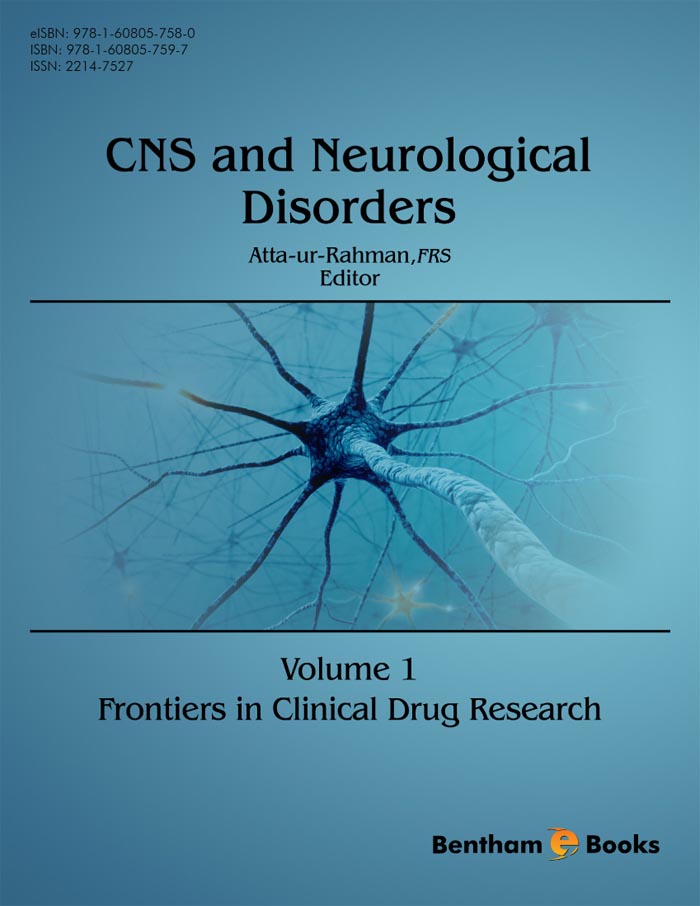Frontiers in Clinical Drug Research - CNS and Neurological Disorders represents comprehensive advances in the development of pharmaceutical agents for the treatment of central nervous system (CNS) and other nerve disorders. It covers a range of topics including the medicinal chemistry, pharmacology, molecular biology and biochemistry of contemporary molecular targets involved in neurological and CNS disorders. The reviews are mainly focused on clinical and therapeutic aspects of novel drugs intended for these targets.
Frontiers in Clinical Drug Research - CNS and Neurological Disorders is a valuable resource for pharmaceutical scientists and postgraduate students seeking updated and critical information for developing clinical trials and devising research plans in the field of neurology. The contributions by leading researchers in the field shed light on a variety of therapeutic areas such as:
- Advances in the treatment of cerebral gliomas, multiple sclerosis and schizophrenia,
- Different uses of antidepressants in treating drug users and adolescents suffering from depression,
- Researches on epilepsy and autism spectrum disorder therapy.
In the first chapter, Peter R. Kufahl et al. have discussed the potential use of antidepressants as therapies for drug use disorders. They have provided an overview of preclinical and clinical research and explained the animal models used to obtain information about the treatment potential of various pharmaceutical compounds. Primary neurotransmitter targets and pharmacokinetic aspects of the therapeutic compounds are presented in the chapter. In chapter two, Eluen A. Yeh and Naila Makhani describe the mechanism of action, efficacy data, and side effect profile of multiple sclerosis therapies with a focus on the newly emerging agents. Gerardo Caruso et al. discuss antisense oligonucleotides therapy as a new potential tool in the treatment of cerebral gliomas in chapter three.
In chapter four, Shigeto Yamamoto and Shigeru Morinobu focus on D-cycloserine (DCS), a partial agonist of N-methyl-D-aspartate (NMDA) receptors, and on histone deacetylase (HDAC) inhibitors. They have provided an overview of the effects of these agents, the clinical implications and drawbacks associated with their use, and directions for future research. Lactate appears to play an important role in energy production.Takashi Uehara and Tomiki Sumiyoshi provide a comprehensive overview of lactate metabolism as a new target for the treatment of schizophrenia in chapter five.
In chapter six, Francesco Pisani et al. review the principles and current issues of antiepileptic drug therapy. Schizophrenia is a devastating mental disorder characterized by positive, negative, affective, and cognitive symptoms. In chapter seven, Seiya Miyamoto provides a review on the effects of currently available antipsychotics and cognitive enhancers under development on cognition in schizophrenia.
In chapter eight Kunio Yui describe autism spectrum disorders (ASD) as a neurodevelopmental disorder with reduced cortical functional connectivity relating to social cognition. The current treatment of ASD and future directions of research in the light of the present understanding of this disease is discussed. In another article the same author presents the current state of development of therapeutics for treatment of adolescent depression.
I hope that the readers will find these reviews valuable and thought provoking so that they trigger further research in the quest for the development of pharmaceutical agents for the treatment of central nervous system (CNS) and other nerve disorders.
I am grateful for the timely efforts made by the editorial personnel, especially Mr. Mahmood Alam (Director Publications) and Mr. Shehzad Naqvi (Senior Manager Publications) at Bentham Science Publishers
Atta-ur-Rahman,
FRS
Kings College
University of Cambridge
Cambridge
UK

